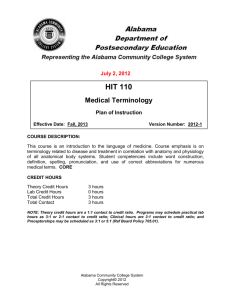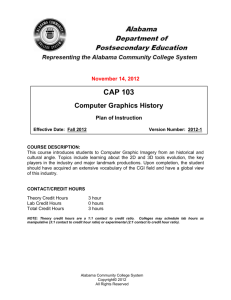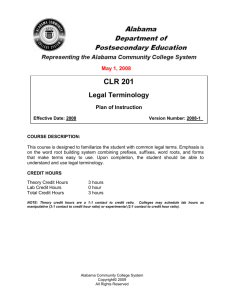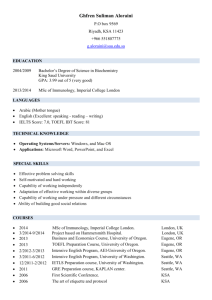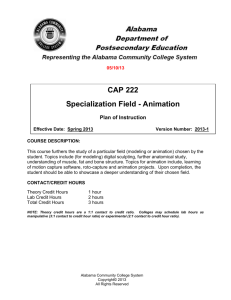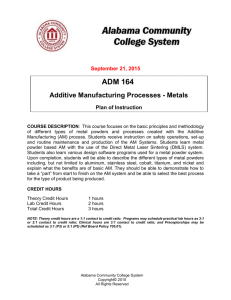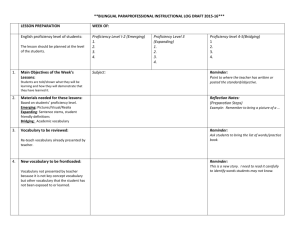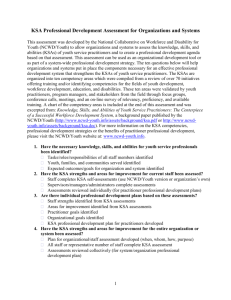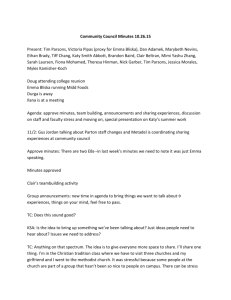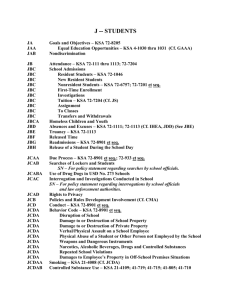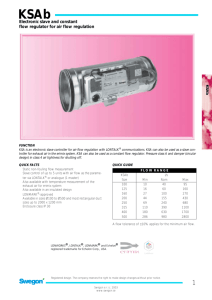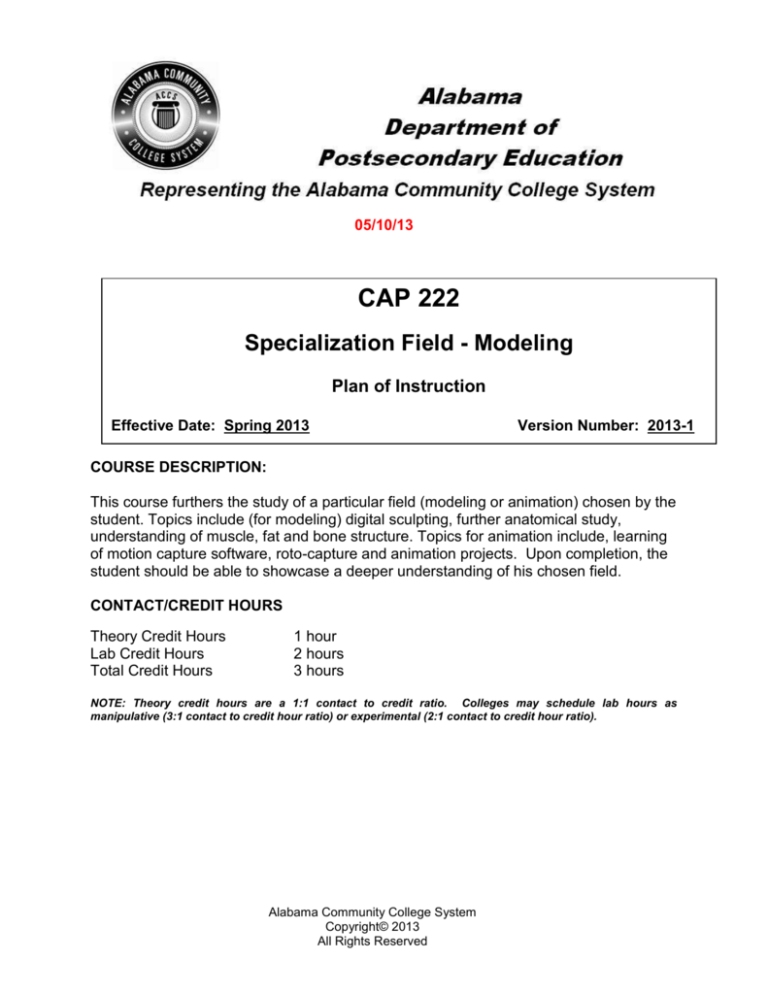
05/10/13
CAP 222
Specialization Field - Modeling
Plan of Instruction
Effective Date: Spring 2013
Version Number: 2013-1
COURSE DESCRIPTION:
This course furthers the study of a particular field (modeling or animation) chosen by the
student. Topics include (for modeling) digital sculpting, further anatomical study,
understanding of muscle, fat and bone structure. Topics for animation include, learning
of motion capture software, roto-capture and animation projects. Upon completion, the
student should be able to showcase a deeper understanding of his chosen field.
CONTACT/CREDIT HOURS
Theory Credit Hours
Lab Credit Hours
Total Credit Hours
1 hour
2 hours
3 hours
NOTE: Theory credit hours are a 1:1 contact to credit ratio. Colleges may schedule lab hours as
manipulative (3:1 contact to credit hour ratio) or experimental (2:1 contact to credit hour ratio).
Alabama Community College System
Copyright© 2013
All Rights Reserved
Specialization Field - Modeling
CAP 222
PREREQUISITE COURSES
None
CO-REQUISITE COURSES
As determined by college.
PROFESSIONAL COMPETENCIES
Use advanced techniques for organic modeling.
Utilize CGI modeling skills on a CGI auto portrait project.
INSTRUCTIONAL GOALS
Cognitive – Comprehend principles and concepts related to advanced animation
or modeling.
Psychomotor – Apply principles of advanced animation or modeling.
Affective – Value the importance of understanding advanced animation or
modeling.
STUDENT OBJECTIVES
Condition Statement: Unless otherwise indicated, evaluation of student’s attainment
of objectives is based on knowledge gained from this course. Specifications may be in
the form of, but not limited to, cognitive skills diagnostic instruments, manufacturer’s
specifications, technical orders, regulations, national and state codes, certification
agencies, locally developed lab/clinical assignments, or any combination of
specifications.
ACCS Copyright© 2013
All Rights Reserved
2
Specialization Field - Modeling
CAP 222
STUDENT LEARNING OUTCOMES
MODULE A – MODELING FIELD: ORGANIC MODELING
MODULE DESCRIPTION – This module instructs students on notions associated with
advanced techniques for organic modeling. Topics include the philosophy of organic
modeling, volume study, proportions, volume blocking, using photographic references,
Mudbox software, details and thickness, organic modeling techniques of the Edge Flow
approach.
PROFESSIONAL COMPETENCIES
PERFORMANCE OBJECTIVES
KSA
A1.0 Use advanced techniques for
A1.1
Create a CG hand and a CG
3
organic modeling.
boulder to demonstrate accurate
volume modeling.
LEARNING OBJECTIVES
A1.1.1 Explain character modeling philosophy.
A1.1.2 Describe the techniques necessary to model accurate volume when
creating a CG hand.
A1.1.3 Describe the techniques necessary to model accurate volume when
creating a CG boulder.
A1.1.4 Explain the importance of faithful proportions and how to rely on
photographic references.
A1.1.5 Describe Mudbox software workflow.
A1.1.6 Discuss a case study emphasizing details and object thickness.
A1.1.7 Explain the preponderance of the edge flow approach with various case
studies (eye, nose and ear).
A1.1.8 Describe Sculptris software workflow.
KSA
3
3
3
4
3
3
4
3
MODULE A OUTLINE:
Organic modeling philosophy
Volume study I: The human hand
Volume study II: The boulder
Proportions study and volume blocking
Using photographic references
Mudbox software
Case study: Details and thickness
Organic modeling techniques: Edge flow
o The eye
o The nose
o The ear
Volume study III: Sculptris Software.
ACCS Copyright© 2013
All Rights Reserved
3
Specialization Field - Modeling
CAP 222
MODULE B – MODELING FIELD: AUTO PORTRAIT
MODULE DESCRIPTION – This module allows students to hone their modeling skills on a
CGI auto portrait project. Topics include reference preparation, volume blocking, detailing,
edge flow, third party evaluation, and final presentation.
PROFESSIONAL COMPETENCIES
PERFORMANCE OBJECTIVES
KSA
B1.0 Utilize CGI modeling skills on a B1.1 Create and revise a CGI human
4
CGI auto portrait project.
head demonstrating accurate
proportions, volume blocking,
edge flow, and presentation
techniques.
LEARNING OBJECTIVES
B1.1.1 Explain the need for collecting a sufficient amount of photographic
references.
B1.1.2 Describe the techniques necessary for accurate proportions and volume
blocking.
B1.1.3 Explain the level of details needed for accuracy.
B1.1.4 Discuss advanced edge flow techniques.
B1.1.5 Explain the necessity of responding to third party requests and revising
the CG model accordingly.
B1.1.6 Describe the shading material and turntable animation techniques used
to present the final object.
KSA
4
4
3
4
4
3
MODULE B OUTLINE:
Reference preparation
Volume blocking
Detailing
Edge flow outline
Third party evaluation
Preparing the model for final presentation
ACCS Copyright© 2013
All Rights Reserved
4
Specialization Field - Modeling
CAP 222
LEARNING OUTCOMES TABLE OF SPECIFICATIONS
The table below identifies the percentage of learning objectives for each module.
Instructors should develop sufficient numbers of test items at the appropriate
level of evaluation.
KSA
Module A
Module B
Limited
Knowledge
and
Proficiency
1
Moderate
Knowledge
and
Proficiency
2
Advanced
Knowledge
and
Proficiency
3
75%
33%
Superior
Knowledge
and
Proficiency
4
25%
66%
The KSA is NOT determined by the verb used in the learning objective, but rather in the context in which
the verb is used and the depth of knowledge and skills required.
Example: Three KSA levels using the same verb (describe):
KSA 1 – Describe three characteristics of metamorphic rocks. (simple recall)
KSA 2 – Describe the difference between metamorphic and igneous rocks. (requires cognitive
processing to determine the differences in the two rock types)
KSA 3 – Describe a model that you might use to represent the relationships that exist within the rock
cycle. (requires deep understanding of rock cycle and a determination of how best to represent it)
ACCS Copyright© 2013
All Rights Reserved
5
Specialization Field - Modeling
Indicator Key Terms
1
Limited
Knowledge
and
Proficiency
2
Moderate
Knowledge
and
Proficiency
3
Advanced
Knowledge
and
Proficiency
4
Superior
Knowledge
and
Proficiency
A
Affective
Objective
ACCS Copyright© 2013
All Rights Reserved
CAP 222
Learner’s Knowledge, Skills and Abilities
Description
Recognize basic information about the subject including terms
and nomenclature.
Students must demonstrate ability to recall information such as
facts, terminology or rules related to information previously
taught.
Performs simple parts of the competency. Student requires
close supervision when performing the competency.
Distinguish relationships between general principles and facts.
Adopts prescribed methodologies and concepts.
Students must demonstrate understanding of multiple facts
and principles and their relationships, and differentiate between
elements of information. Students state ideal sequence for
performing task.
Performs most parts of the competency with instructor
assistance as appropriate.
Examines conditions, findings, or other relevant data to select an
appropriate response.
The ability to determine why and when a particular response is
appropriate and predict anticipated outcomes.
Students demonstrate their ability to seek additional information
and incorporate new findings into the conclusion and justify their
answers.
Performs all parts of the competency without instructor
assistance.
Assessing conditions, findings, data, and relevant theory to
formulate appropriate responses and develop procedures for
situation resolution. Involves higher levels of cognitive
reasoning.
Requires students to formulate connections between relevant
ideas and observations.
Students apply judgments to the value of alternatives and select
the most appropriate response.
Can instruct others how to do the competency.
Performs competency quickly and accurately.
Describes learning objectives that emphasize a feeling tone, an
emotion, or a degree of acceptance or rejection.
Objectives vary from simple attention to selected phenomena to
complex but internally consistent qualities of character and
conscience.
Expressed as interests, attitudes, appreciations, values, and
emotional sets or biases.
6


